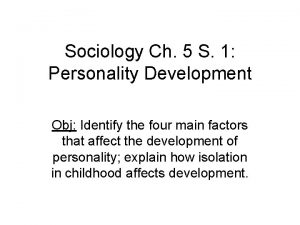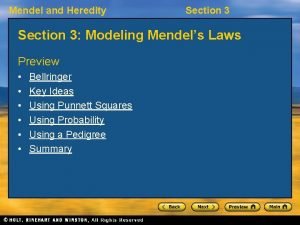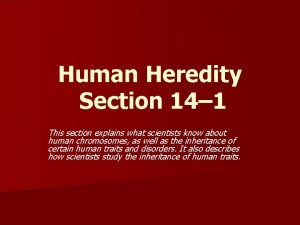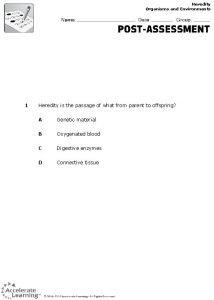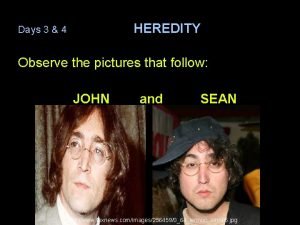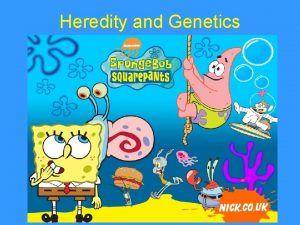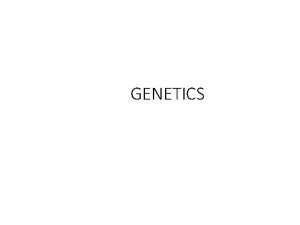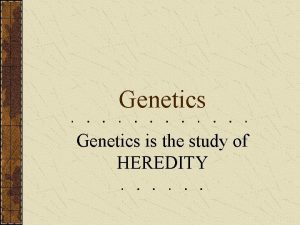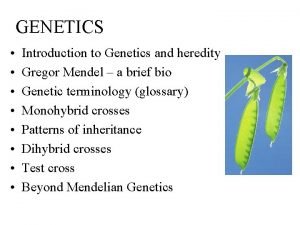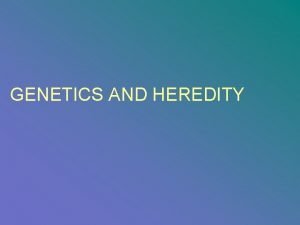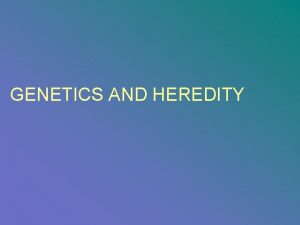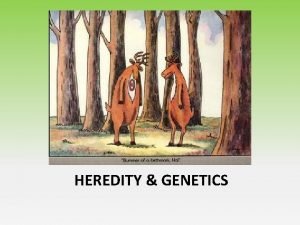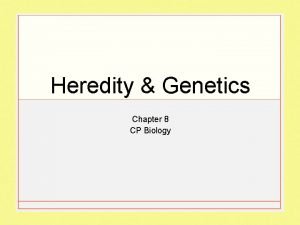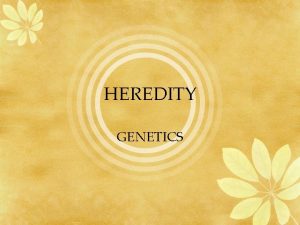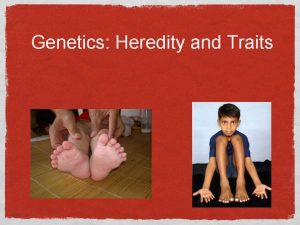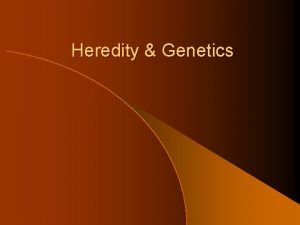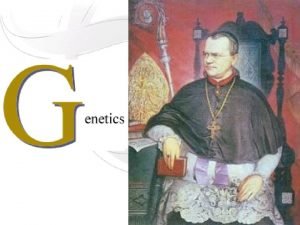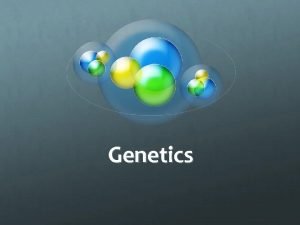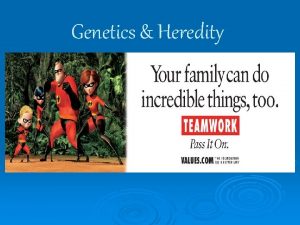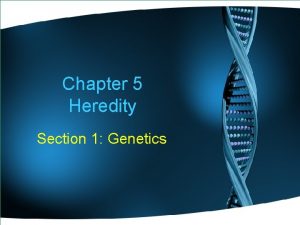Genetics The Science of Heredity Genetics The Science













- Slides: 13

Genetics: The Science of Heredity

Genetics: The Science of Heredity What is Genetics? GENETICS - is the science of how traits are inherited. In other words, how characteristics pass from parent to offspring.

Genetics: The Science of Heredity So, what are “genes” anyway? Genes are: • “The basic unit of inheritance” (they are what you get from your parents). • Pieces of DNA (more on that later…) • The recipe for making YOU. (Genes make proteins & proteins make up your cells). • What make you different from one another. No one else has your exact, unique combination of genes.

Genetics: The Science of Heredity Where are my “genes”? • Your genes are inside all the cells of your body. • Inside the nucleus of your cells, are chromosomes. • Chromosomes are made of tightly wound up DNA (called chromatin). • The DNA code makes up your genes.

Genetics: The Science of Heredity Chromosomes? !? ! • Chromosomes are tightly wound-up “packages” of DNA. • Humans have 23 pairs of chromosomes, 46 in all. (Sperm & Egg cells only have 23 single chromosomes!) • Each parent contributes one chromosome to each pair, so you get half your chromosomes from your mom and half from your dad.

Genetics: The Science of Heredity Tell me more about DNA… DNA stands for: deoxyribonucleic acid. Sound it out…. DE – OXY – RYE – BOW – NEWK – LAY – IC ACID. DNA is a giant molecule made of certain chemicals.

Genetics: The Science of Heredity The Structure of DNA looks like a long, twisted ladder called a DOUBLE HELIX. • There are 2 long strands. These are the sugar-phosphate “backbones” of DNA. • The “steps” of the ladder that connect the strands are basepairs.

Genetics: The Science of Heredity The Structure of DNA There are only 4 different chemicals that bond the strands together: ADENINE (A) THYMINE (T) CYTOSINE (C) GUANINE (G) Only bond with each other! 2

Genetics: The Science of Heredity Order of the Base Pairs = Genetic Code The order of the base pairs (ACGTGCGATAT) are the recipe for how the proteins will be made… If you have 1 of the strands, you can build a protein by matching up the missing bases: G T C A This is how DNA copies itself and makes proteins!

Genetics: The Science of Heredity Mutations Sometimes, mistakes are made when DNA is copied. These mistakes are called MUTATIONS. There are 3 types: substitution, deletion, addition.

Genetics: The Science of Heredity Effects of Mutations Some mutations are harmful, some are helpful, and others don’t make much of difference. Mutations add GENETIC VARIETY. We are all different because mutations have occurred in our genetic code. Webbed toes!

Genetics: The Science of Heredity So, how many genes do we have anyway? The HUMAN GENOME: • Has 3 billion base pairs of DNA! • Includes about 35, 000 genes! • 99. 9% of your DNA is identical to everyone else’s. All our differences come from that 0. 1%!

Genetics: The Science of Heredity - The DNA Connection Review Inside your cells, you have chromosomes (23 pairs!). Chromosomes are made of long strands of DNA has a double helix shape (twisted ladder). DNA is made of combinations of nitrogen base-pairs (A-T, C-G). These combinations are the recipes for making proteins.
 Genetics is the study of heredity
Genetics is the study of heredity Chapter 17 lesson 2 heredity and genetics
Chapter 17 lesson 2 heredity and genetics Brainpop heredity worksheet answer key
Brainpop heredity worksheet answer key Heredity characteristics include body build
Heredity characteristics include body build Heredity concept map
Heredity concept map Section 3 mendel and heredity
Section 3 mendel and heredity Section 14-1 human heredity
Section 14-1 human heredity Heredity defines the passage of genetic material from –
Heredity defines the passage of genetic material from – Pictures of heredity
Pictures of heredity Allele
Allele Heredity
Heredity ____________ is the study of heredity.
____________ is the study of heredity. Homozygous
Homozygous Chapter 11 human heredity section 11-3
Chapter 11 human heredity section 11-3



